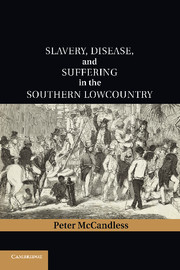Book contents
- Frontmatter
- Contents
- List of Figures
- List of Maps
- Preface
- Acknowledgments
- List of Abbreviations Used in Notes
- MAP 1 The Lowcountry, Charleston, and the Caribbean region
- MAP 2 The South Carolina lowcountry, showing Anglican parishes and slave proportion of population, c. 1760s
- MAP 3 Charleston Harbor, based on a British map, c. 1780
- MAP 4 The Revolutionary War in the South
- PART I TALK ABOUT SUFFERING
- PART II COMBATING PESTILENCE
- Bibliography
- Index
Preface
Published online by Cambridge University Press: 03 May 2011
- Frontmatter
- Contents
- List of Figures
- List of Maps
- Preface
- Acknowledgments
- List of Abbreviations Used in Notes
- MAP 1 The Lowcountry, Charleston, and the Caribbean region
- MAP 2 The South Carolina lowcountry, showing Anglican parishes and slave proportion of population, c. 1760s
- MAP 3 Charleston Harbor, based on a British map, c. 1780
- MAP 4 The Revolutionary War in the South
- PART I TALK ABOUT SUFFERING
- PART II COMBATING PESTILENCE
- Bibliography
- Index
Summary
Here was a thin neck in the hourglass of the Afro-American past, a place where individual grains from all along the West African coast had been funneled together, only to be fanned out across the American landscape with the passage of time.
Peter Wood, Black MajoritySlavery, Disease, and Suffering in the Southern Lowcountry examines the impact of disease in the region known as the South Atlantic lowcountry. The book focuses primarily on South Carolina and its metropolis, Charleston, from 1670 to 1860. Because this area was in many ways the seedbed for much of subsequent southern and American culture, the story told here has a much wider significance. In the mid-eighteenth century, the rice and indigo plantations that dominated the region spread north into the Cape Fear region of North Carolina and south to the coastal lands of Georgia. After 1763, they moved into northern Florida. In the late eighteenth century, the lowcountry plantation regime began to move into the Carolina backcountry, though cotton replaced rice as the most important crop. In the nineteenth century, lowcountry folk spread their plantations and diseases westward throughout much of the South. What a small number of settlers began in 1670, where the Ashley and Cooper Rivers come together to form the Atlantic Ocean (a local joke), had a huge influence on the history of the South and the United States. The Carolina lowcountry became the wealthiest region in late colonial North America.
- Type
- Chapter
- Information
- Slavery, Disease, and Suffering in the Southern Lowcountry , pp. xv - xviiiPublisher: Cambridge University PressPrint publication year: 2011

